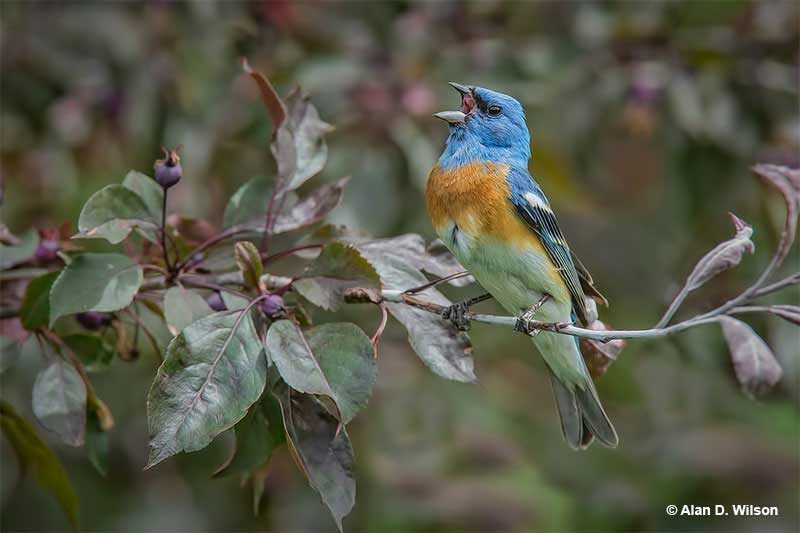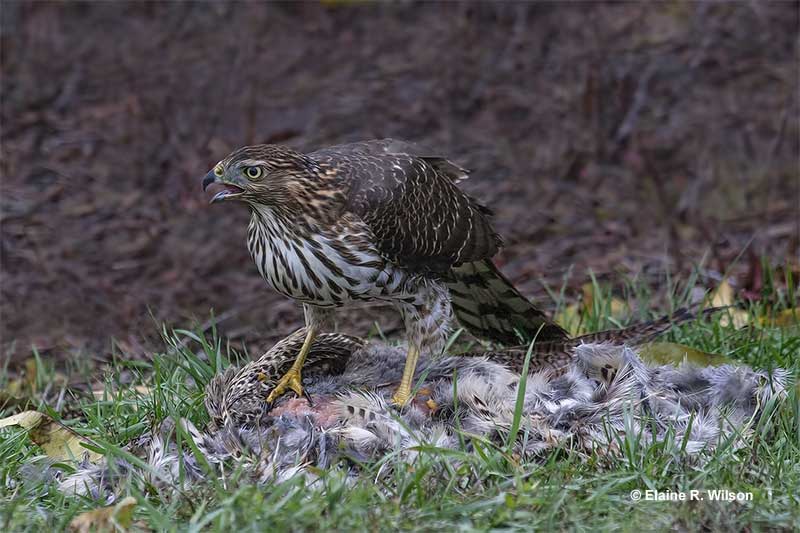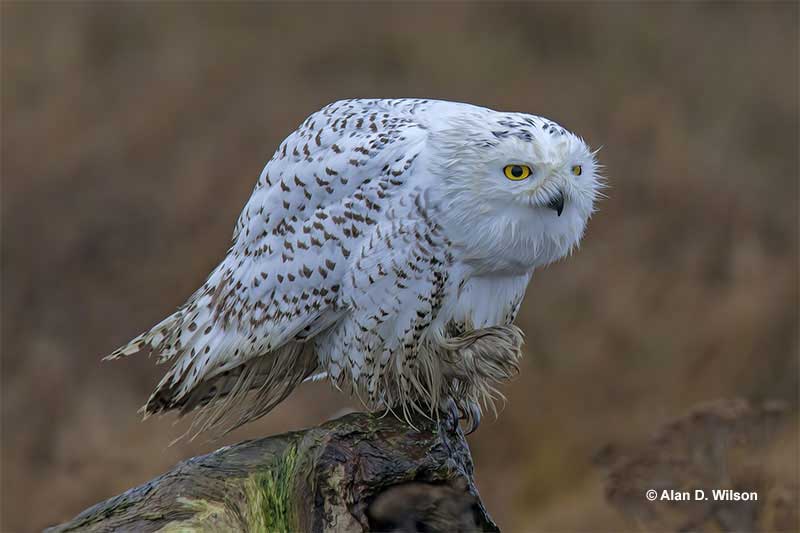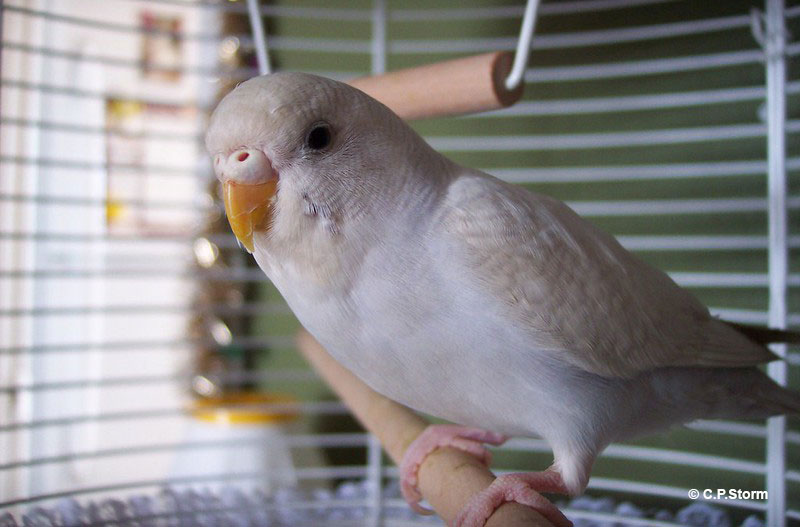There are surprisingly many bird species in North America that start with the letter L. Some of them describe the looks of the bird, some their range or habitat, some their behavior, and some their vocalizations!
Quite a few are named to honor a relative or a friend. Let’s have a closer look!
Ladder-backed Woodpecker
Ladder-backed Woodpeckers inhabit deserts, desert scrub, and thorn forests where they forage on tree trunks and branches for insects.
They have black-and-white plumage with a distinctive barred pattern on their back and wings that resembles a ladder. The species was first described in 1829 by a German herpetologist (a zoologist who studies amphibians and reptiles) instead of an ornithologist!
Lapland Longspur
Lapland Longspurs are chunky sparrow-like grassland birds with heavily streaked brown-and-pale plumage. They are the only longspur species in North America that can also be found outside of North America. During the breeding season, they inhabit the northernmost arctic tundra around the Northern Hemisphere. And, you guessed it, they also breed across Lapland! Additionally, birds in the longspur genus are distinguished by their elongated hind claws.
Lark Bunting
Lark Buntings belong to the New World sparrow family called Passerellidae and to the superfamily which includes buntings. Larks, however, make up the family Alaudidae. So why are they called Lark Buntings if they are most closely related to sparrows? The first part of their name refers to the male’s lark-like song and high-flying display during the breeding season, especially reminiscent of the Eurasian Skylark. Additionally, the “bunting” part of the name refers to the bird’s short, conical bill akin to other seed-eating buntings.
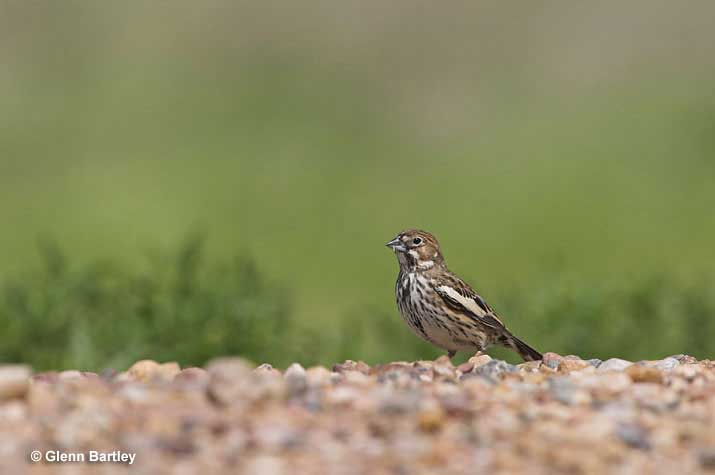
Lark Sparrow
Lark Sparrows also belong to the New World sparrow family Passerellidae, so the second part of their name is accurate. But why a lark sparrow, specifically? It is again tied to their songs and courtship behavior.
The male’s song is a pleasant mix of buzzes, churrs, and trills, similar to that of Old World larks. In courtship, they hop, crouch, spread their tails, and droop their wings, which is unlike other sparrow species.
Laughing Gull
Laughing Gulls live along the eastern coast of the United States. These gulls inhabit sandy beaches, marshes, and coastal areas, where they scavenge for food and nest in colonies.
They have black heads in breeding plumage and distinctive red bills. They are known for their loud, raucous and nasal high-pitched calls that sound like laughter.
Lawrence’s Goldfinch
Lawrence’s Goldfinch is a small songbird with quite unremarkable plumage. They are mostly gray with dirty yellow patches on their wings. Males have yellow on their bellies as well.
John Cassin named the species after his colleague George Lawrence, as he was the first one to identify and describe the bird.
Lazuli Bunting
Lazuli Buntings are striking songbirds found in western North America. Males are vibrant with a bright blue upperside, heads, and throat, contrasting with a rusty orange breast and white belly. Females are modestly brown overall with grayer tones above and pale cinnamon below.
The species is named for the blue of the male’s plumage that resembles the semi-precious gemstone lapis lazuli.
Le Conte’s Sparrow
Le Conte’s Sparrow is a small and stealthy orange-buff species that uses its streaked plumage to stay nearly invisible amongst dense vegetation. They even prefer to run along the ground rather than fly.
In 1844, John James Audubon named the bird after his friend Doctor John LeConte. However, there is some debate over whether he meant his cousin or a well-known entomologist. The bird is also known as LeConte’s Bunting.
Le Conte’s Thrasher
LeConte’s Thrasher is as pale and sandy as the arid desert habitats it lives in. They prefer to run and only fly when necessary.
The species was named after the American naturalist John Eatton LeConte, Jr. who was the first to describe the species around the year 1850.
Initially, it was called LeConte’s Mocking Bird, which was later switched to the current name to more accurately reflect its classification. This species is also called the desert thrasher or Yuma thrasher, the latter referring to the place where it was first described.
Least Bittern
Least Bitterns are named for their size, as they are the smallest of the heron family. They appear blackish above and pale below from a distance, with adult males showing two white stripes down their backs and females being more uniformly brownish.
This species also has a very rare dark form that was once considered a separate species due to its coloring. It was known as Cory’s Least Bittern, named after Charles Cory, the person who first described the morph.
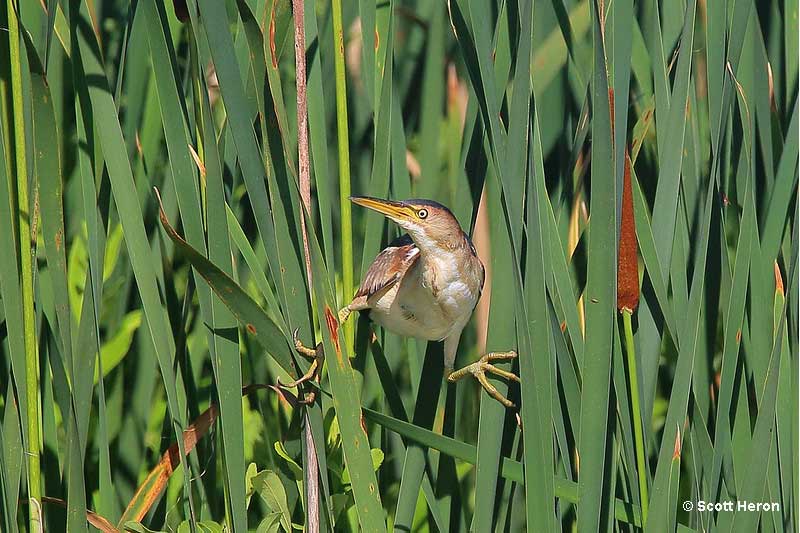
Least Flycatcher
Least Flycatchers are small and inconspicuous birds, olive-grayish above with a pale underside and a faint yellow wash on the belly.
It is the smallest flycatcher species in eastern North America within the Empidonax genus, hence the first part of its name. The genus name comes from Ancient Greek and can be loosely translated into “gnat-master”.
They primarily feed on insects, often darting between perches from mid to upper forest levels. Additionally, the species is also known as “chebec” or “chebecker” due to their calls.
Least Grebe
Least Grebes are dark gray waterbirds that for some reason manage to look ruffled most of the time. They are the smallest of the grebe family in North America, measuring only around 8-10 inches long, hence the first part of the name.
The second part of their name refers to the fact that most species in the Grebe family tend to have crests during the breeding season. Grebe comes from French grebe which in turn possibly comes from Breton krib, meaning comb. They are also known as Santo Domingo Grebes or Mexican Grebes.
Least Sandpiper
The Least Sandpiper holds the title of the world’s smallest shorebird, not to mention the smallest sandpiper, measuring just 5-6 inches long. They have mottled brown upperparts and white underparts and are no bigger than a sparrow.
The species is also referred to as the ‘least stint’. Stint is an old and generic term for small sandpipers.
Least Tern
The Least Tern, the smallest among them in the world, is named for its diminutive size. They measure roughly 8-9 inches long. The birds forage along ocean coastlines and rives, darting over the water and then diving swiftly for prey.
They dive-bomb any intruders that come near their nests. Because of this, they are also known as strikers or little strikers.
Lesser Black-backed Gull
Lesser Black-backed Gulls used to be only winter visitors in North America but in recent times have decided to stick around year-round in some places.
The species is named for its appearance and size relative to the Great Black-backed Gull, a species very similar to them. Although fairly large, they are smaller than the Great Black-backed Gulls and have white plumage with slaty gray back and wings and black wingtips.
The specific shade of gray ranges from dark gray to sooty to jet black depending on the subspecies and location. However, Lesser Black-backed Gulls tend to be paler in comparison.
Lesser Goldfinch
Lesser Goldfinches are named for their smaller size compared to other species of goldfinches. They measure only 3.5-4.5 inches long and are among the smallest true finches in the world, along with the Andean Siskin.
Lesser Goldfinches have five subspecies with variations in the color of their backs. Two of them can be seen in the United States and they are also known as the green-backed lesser goldfinch and the dark-backed lesser goldfinch.
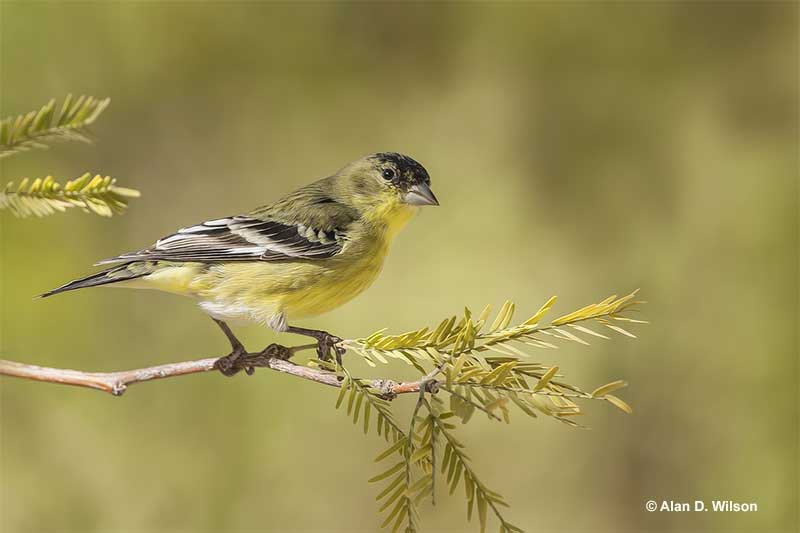
Lesser Prairie-Chicken
The Lesser Prairie-Chicken is named in contrast to the Greater Prairie-Chicken, being smaller and lighter in color. These stocky birds are medium-sized members of the grouse family, with brown-and-white striped plumage.
Males sport distinctive orange eyebrows and a reddish air sack on the neck, typically concealed under feathers. You can find the foraging in shortgrass prairies.
Lesser Scaup
The Lesser Scaup is named in comparison to the Greater Scaup, which is another very similar species of diving duck. Both males have white bodies, spotted back, and black heads, front, and rear.
However, Lesser Scaups are smaller and have a purple instead of a green sheen on their heads. Even though their ranges overlap, they rarely mix. Lesser Scaups are also known as little bluebills.
Lesser Yellowlegs
The Lesser Yellowlegs is very similar to the Greater Yellowlegs in appearance but is smaller in size, more compact, and has a shorter and thinner bill.
As the name suggests, they have very long yellow legs. You can see them gracefully walk across wetlands with a high gait, occasionally darting after prey.
Lewis’s Woodpecker
Lewis’s Woodpeckers don’t really look or act like your average woodpecker. They have blackish upperside with a green sheen, a pinkish-red belly, a dark red face, and a gray collar.
Their body shape and flight look more similar to that of a crow, and they tend to catch insects mid-air like flycatchers. The species was named after Meriwether Lewis who was the first one to see the bird on his expedition in 1805.
Limpkin
Limpkins are large wading birds with mottled brown plumage, long legs, and very long toes. They mostly inhabit freshwater swamps and marshes where they forage in shallow water, slowly wading through it or standing on the leaves of floating plants such as water lettuce.
The way they walk may give the impression of limping, hence the name. They are also known as carraos or crying birds after their loud wailing screams.
Lincoln’s Sparrow
Lincoln’s Sparrows, like many other sparrow species, are small, brown and streaked, pale below, and have a small bill. They like to hide amongst the dense vegetation of thickets, brushy bogs, forest edges, and wet meadows.
John James Audubon named the species in honor of Thomas Lincoln. He was his travel companion and the only one who managed to capture one to bring it back for further study.
Little Blue Heron
Little Blue Herons are named after their adult plumage and size. They are smaller compared to other heron species in North America, being about the same size as a Herring Gull.
Adults are dark overall with a purple-maroon head but mostly slaty-blue plumage, hence the name. However, juvenile birds are pure white and immatures are a beautiful patchwork of blue and white.
Loggerhead Shrike
Loggerhead Shrikes are stocky songbirds with long tails and big blocky heads. They have elegant black-gray-white plumage and thick bills with a hook at the end.
Their name comes from the shape of the head – loggerhead has a similar meaning to blockhead. Shrike refers to their songs and calls, which are fairly shrill and shrieking.
The species is also called butcherbird due to its carnivorous tendencies. In fact, they are the only known predatory songbird species.
Long-billed Curlew
Long-billed Curlews are large shorebirds with distinctively long, curved bills used for probing mudflats in search of prey. The bird itself measures 20-26 inches long and the bill measures a whopping 4.5-8.5 inches!
This is also why they are known as sicklebirds or candlestick birds. Curlew comes from the birds shrill high-pitched whistled cur-lee.
Long-billed Dowitcher
Long-billed Dowitchers are mottled brown above, pale below, and have a fairly long and straight bill. However, the length of the bill is not a sure-fire way to distinguish the species from other similar ones, especially from the similar Short-billed Dowitchers. Only females have significantly longer bills.
The second part of their name is believed to be a result of a dialect and how the hunters originally called the bird. They named it German snipe and German in Pennsylvania Dutch is ‘Duitscher’.
Long-eared Owl
Long-eared Owls are nocturnal hunters primarily inhabiting woodlands and forests. They have dark plumage with buff or orange facial markings and intricate patterning, helping them camouflage against trees.
Their long ears often make them seem surprised or annoyed and make their face look similar to that of a cat, earning them the nickname ‘cat owl’. They are also known as lesser horned owls since they are smaller and slenderer than the similar Great Horned Owls.
Long-tailed Duck
Long-tailed Ducks are named for the elongated central tail feathers of the males. The former name for the species was oldsquaw.
However, the term was considered derogatory as it historically referred to indigenous Native American women in a disrespectful manner. In 2000, the name was replaced with the current and more descriptive and respectful name.
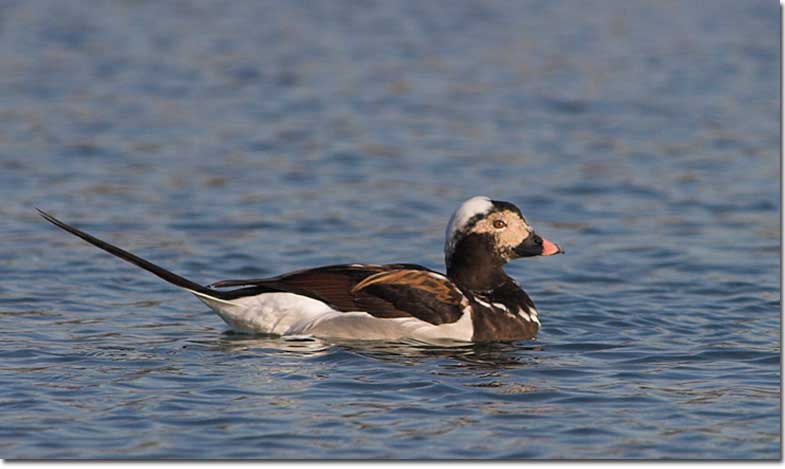
Louisiana Waterthrush
Louisiana Waterthrushes mostly live along forested streams and sing from low perches along the banks. They are agile hunters, briskly foraging at the water’s edge to capture aquatic insects and small vertebrates. They may wade into the water to hunt, resembling a small heron.
Known as “feathered trout,” their presence indicates clean, healthy waterways abundant with aquatic life like mayflies and stoneflies.
Lucifer Hummingbird
Lucifer Hummingbirds are fairly modest, especially when it comes to hummingbirds. Males are metallic green above and have a dingy white underside. Females are greenish above and buffy below.
The name Lucifer has nothing to do with the devil, however, rather it has to do with the brilliant iridescent purple throat gorget of the male. It originates from Latin and means ‘light bearer’ or ‘light bringer’, referencing to the male’s dazzling throat. The species is also known as Lucifer Sheartail due to its deeply forked tail.
Lucy’s Warbler
Lucy’s Warblers are small and overall grayish insectivorous songbirds found in the southwestern United States and northern Mexico. They inhabit mesquite woodlands and other scrubby desert habitats.
The species was named after the daughter of Spencer Fullerton Baird, the second secretary of the Smithsonian Institution. These birds are also called desert warblers or mesquite warblers due to their habitat preferences.
Bird Families Starting With L
- Lizard-cuckoos – Once considered a single species, the four lizard-cuckoo species are slender, have long tails, and are in tropical forests.
- Lancebills – A genus consisting of two hummingbird species with a straight, sharply pointed bill.
- Lapwings – Ground-nesting birds, often with a plumage with some combination of black, brown, and white. Often inhabits open fields and wetlands.
- Loons – Sleek diving birds with a haunting call, known for their underwater agility and striking black-and-white plumage.
- Lovebirds – Small, colorful parrots with affectionate behavior, mate for life, often seen in pairs and kept as pets.
- Leaftossers – A genus of ground-dwelling birds that uses its unique bill to toss aside leaf litter in search of insects and other prey.
- Larks – Small to medium-sized birds known for their melodious songs and distinctive high-flying fluttering and gliding displays.
- Leaf warblers – Small, active birds known for their greenish-yellow to gray-brown plumage and habit of foraging among foliage for insects.
- Longspurs – Stocky, ground-feeding birds with a distinctive long hind claw, found in open grasslands and tundra habitats.
More in the series: birds starting with E – starting with M – starting with S – starting with U
